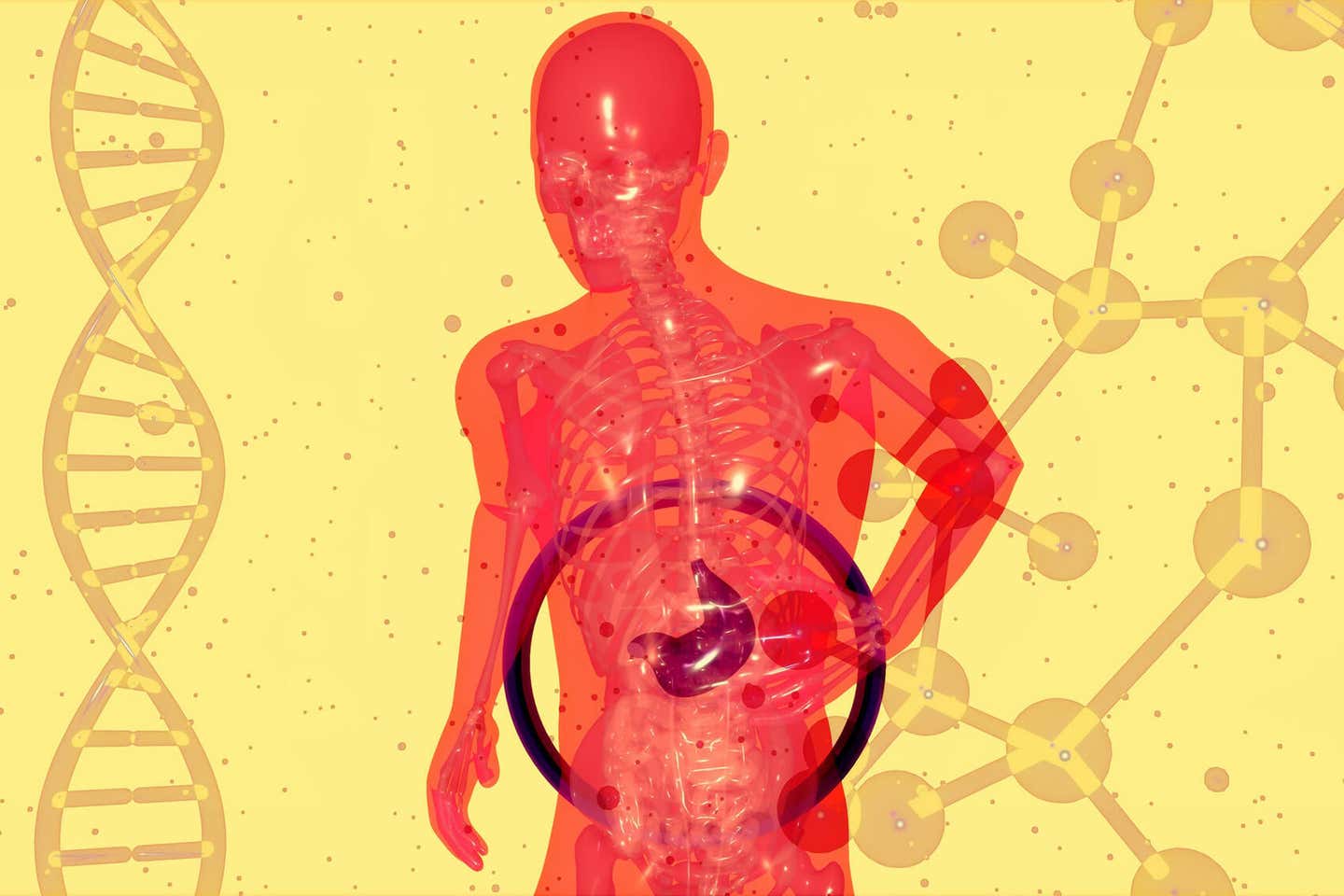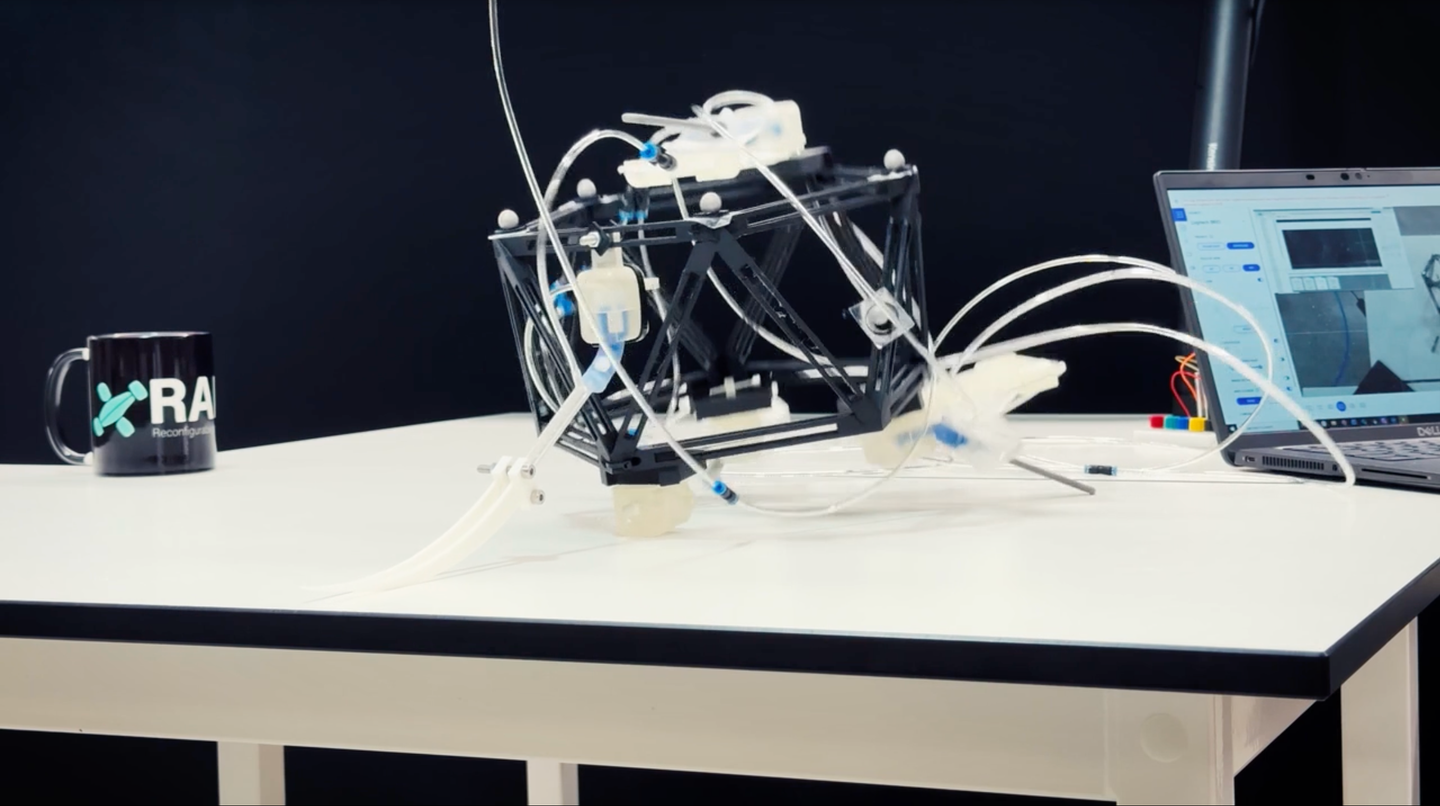Alzheimer’s disease may start in your gut, new research finds
Alzheimer’s remains a major health concern, being the predominant diagnosis for dementia patients and ranking sixth as a cause of death in the U.S.

A fresh look at Alzheimer’s disease has uncovered a hidden pathway from your gut to your brain. (CREDIT: Julien Tromeur on Unsplash)
A fresh look at Alzheimer’s disease has uncovered a hidden pathway from your gut to your brain—one that carries a potent toxin and may trigger the disease. Even more striking, you could help block this process with something as simple as more fiber in your diet.
This discovery comes from research led by Drs. Yuhai Zhao and Walter J. Lukiw at the LSU Health New Orleans Neuroscience Center. Their findings map how a molecule produced by a common gut bacterium can cross into the brain and cause damage linked to Alzheimer’s.
The culprit is BF-LPS, a lipopolysaccharide produced by the Gram-negative bacterium Bacteroides fragilis. This microbe lives naturally in your gastrointestinal tract. But in certain conditions, its toxin slips past the gut lining, travels through your blood, and infiltrates brain cells.
Dr. Lukiw calls lipopolysaccharides “among the most potent microbial-derived pro-inflammatory neurotoxic glycolipids known.” Scientists have detected different forms of LPS in neurons affected by Alzheimer’s disease across multiple research labs.
From the gut to the brain
The journey of BF-LPS begins in your gut microbiome—a dense community of about 10¹⁵ microorganisms from thousands of species. While many are harmless or even helpful, Bacteroides fragilis can produce BF-LPS, a compound with serious neurotoxic potential.
Researchers tracked its path: BF-LPS leaks from the gastrointestinal tract, crosses the blood-brain barrier through circulation, and enters brain compartments. Once inside, it sparks inflammation in neurons and blocks the production of neurofilament light chain (NF-L)—a protein essential for keeping nerve cells structurally stable.
When NF-L levels drop, neurons lose their scaffolding. This leads to cell shrinkage, axonal thinning, disrupted synapses, and eventually cell death. In Alzheimer’s brains, these changes are widespread.
Related Stories
- Scientists develop game-changing Alzheimer’s drug that reverses brain damage
- Heart-healthy habits prevent cancer, Alzheimer’s, COPD, other diseases
- Two FDA-approved cancer drugs significantly reverse Alzheimer's disease
The study revealed another layer to the damage. BF-LPS activates the NF-κB signaling pathway, which boosts production of a small RNA molecule called microRNA-30b. This molecule binds to NF-L messenger RNA, reducing NF-L protein production even further. It’s a double blow: the toxin directly hinders NF-L and also turns on a genetic suppressor that keeps NF-L low.
Fiber’s protective role
The most hopeful part? This destructive chain reaction can be slowed—or even prevented—by adjusting your diet.
Dietary fiber helps regulate the composition of your gut microbiome, limiting the abundance of Bacteroides fragilis. That means less BF-LPS is produced, lowering the risk that it will reach your brain.
From a nutritional perspective, the fix is clear. The USDA recommends women under 50 consume 25 grams of fiber daily, and men 38 grams. Over 50, women should aim for 21 grams and men 30 grams. Yet Americans typically get only 10–15 grams per day.
“Balancing the microorganisms in the microbiome can effectively regulate Alzheimer’s-related microbes and their potential to release neurotoxins like BF-LPS,” says Dr. Lukiw.
How BF-LPS fits into Alzheimer’s pathology
Alzheimer’s disease affects an estimated 5.8 million Americans aged 65 and older, and that number may rise to 13.8 million by 2050. It is the most common cause of dementia and the sixth leading cause of death in the United States.
Traditional research has focused on amyloid-beta plaques and tau tangles in the brain. But the new study highlights a lesser-known factor: the gut-brain axis. This communication network links gut microbes to brain health through hormones, nerve signals, and microbial byproducts.
In this case, BF-LPS is more than just a passenger in the bloodstream—it’s an active saboteur. In addition to damaging neurons, amyloid-beta peptides appear to help LPS enter brain cells by forming temporary channels in their membranes.
This toxic partnership worsens inflammation, disrupts synaptic communication, and undermines the brain’s structural integrity. The result is a cascade of degeneration characteristic of Alzheimer’s and possibly other neurodegenerative diseases.
Neurofilament light chain: a key to nerve cell stability
NF-L is the most abundant neurofilament protein in healthy neurons, forming part of the axoskeleton that maintains cell shape and supports synaptic connections. It works with neurofilament medium and heavy chains to anchor other structural proteins and regulate nerve signal transmission.
When NF-L is depleted inside neurons—as seen with BF-LPS exposure—the axoskeleton collapses. This structural loss directly affects neurotransmission, memory formation, and overall brain function.
Curiously, while NF-L decreases inside neurons during degeneration, its levels rise in blood and cerebrospinal fluid. This makes NF-L a promising biomarker for diagnosing and tracking neurodegenerative diseases, including Alzheimer’s, Parkinson’s, Huntington’s, ALS, and frontotemporal dementia.
The new research suggests that the NF-L drop inside neurons may stem from BF-LPS-induced overproduction of microRNA-30b, which shuts down NF-L synthesis. This is the first identified example of a microbiome-derived neurotoxin altering neuron structure through microRNA-mediated gene suppression.
MicroRNA-30b: a small molecule with big impact
MicroRNAs are tiny RNA sequences that fine-tune gene expression. In the brain, about 45–50 microRNAs are abundant and detectable, many under NF-κB regulation. MicroRNA-30b is one of them.
In animal models and human studies, microRNA-30b overexpression in the hippocampus impairs synaptic transmission, reduces dendritic spines, and harms learning and memory. It is strongly upregulated in Alzheimer’s brains, especially when neurons are exposed to LPS or amyloid-beta.
By targeting the NF-L gene, microRNA-30b disrupts the neuron’s structural backbone. This makes it a potential therapeutic target—blocking its effects could help preserve NF-L and maintain synaptic stability.
Why the microbiome matters in Alzheimer’s prevention
Your gut microbiome is not just a collection of bacteria—it’s an interactive ecosystem that influences immunity, metabolism, and brain health. In Alzheimer’s, the balance of species can shift toward ones that produce harmful molecules like BF-LPS.
This study underscores three novel points:
- The Alzheimer’s-linked pathway begins inside the body, making it active throughout life.
- The neurotoxin BF-LPS is a natural byproduct of gut microbial metabolism.
- The abundance of BF-LPS-producing bacteria can be regulated by dietary fiber intake.
By improving your fiber intake, you help maintain a healthier microbial balance, reduce BF-LPS levels, and potentially lower your Alzheimer’s risk.
The path forward
The LSU Health New Orleans team—joined by Drs. Vivian Jaber, Nathan Sharfman, and Aileen Pogue of Alchem Biotech Research—believes that understanding this gut-brain connection could open new doors for diagnosis and treatment.
Future strategies might include microbiome monitoring, targeted probiotics, or therapies that block BF-LPS from reaching the brain. For now, a practical first step is simple: eat more fiber.
As Dr. Lukiw puts it, “Dietary-based approaches to balance the microorganisms in the microbiome may be an attractive means to modify the abundance, speciation, and complexity of Alzheimer’s-relevant microbes.”
By keeping your gut microbiome in check, you may be protecting your brain in ways science is only beginning to understand.
Research findings are available online in the journal Frontiers in Neurology.
Note: Materials provided above by The Brighter Side of News. Content may be edited for style and length.
Like these kind of feel good stories? Get The Brighter Side of News' newsletter.



